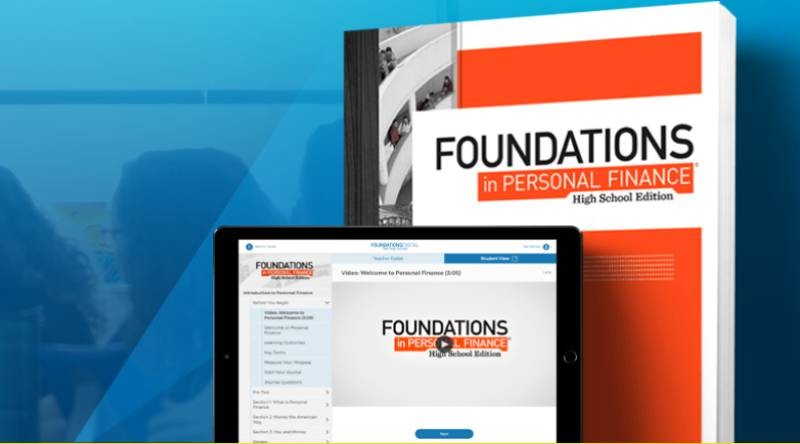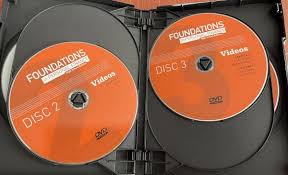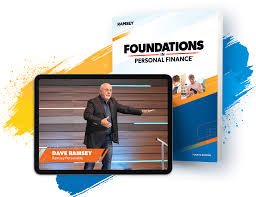What are the Five Foundations in Personal Finance: 5 Best

The high school curriculum “Foundations in Personal Finance” comprises 13 chapters covering fundamental principles of personal finance. These chapters address topics such as budgeting, saving, debt avoidance, investing, consumer savvy, and more. The curriculum aims to provide students with essential knowledge and skills for managing their finances effectively.
Foundations in Personal Finance
“Foundations in Personal Finance” is a comprehensive curriculum designed to teach high school students essential principles and skills related to personal finance. Developed by renowned financial expert Dave Ramsey, this curriculum covers a wide range of topics to equip students with the knowledge and tools necessary to make informed financial decisions.
The curriculum is typically organized into 13 chapters, each focusing on a specific aspect of personal finance. These chapters cover key areas such as budgeting, saving and investing, debt management, understanding credit, insurance, taxes, and wise consumer choices. The content is designed to be engaging and practical, providing real-life examples and scenarios to help students apply the concepts they learn.
In addition to the core textbook, the “Foundations in Personal Finance” curriculum often includes supplemental resources such as videos, interactive activities, discussion questions, and assessments. These resources aim to enhance student engagement and facilitate a deeper understanding of the material.
The curriculum emphasizes the importance of building a strong financial foundation early in life and encourages responsible financial habits. By equipping students with the knowledge and skills to manage their money effectively, “Foundations in Personal Finance” strives to empower them to achieve financial independence and make wise financial decisions throughout their lives.
Understanding the Fundamental Foundations In Personal Finance
Getting a fundamental understanding of these 10 essential lessons in personal finance enables you to grasp the overall financial landscape. This knowledge empowers you to make improved financial choices, steer clear of common money pitfalls, and join the select group that effectively grows their wealth. Instead of merely working for money, you learn to make your money work for you.

Foundations in Personal Finance
1. Understand How Money Works
Money serves as a medium of exchange, no more and no less. It is crucial to have money when acquiring goods or services. Avoid attributing any other significance to money. It is essential to recognize that money is neither inherently good nor evil. It is an inanimate object, devoid of moral qualities.
2. How Taxes Work Instead Of Complaining About It
In the context of foundations in personal finance, taxes represent payments made to government entities, enabling the financial resources necessary to sustain, develop, and uphold public communities. These funds contribute to the maintenance of infrastructure, government institutions and personnel, law enforcement, education, and various public services.
Considering taxes are typically among the most substantial expenses individuals will encounter throughout their lives, understanding strategies to minimize tax payments can result in significant savings.
While taxes are essential, it is prudent to be aware of and utilize all eligible tax deductions and credits available to you. By maximizing your knowledge of potential tax breaks, you can make informed decisions to optimize your financial situation.
3. Control Your Money, Or It Will Control You
A budget is a straightforward record of your incoming funds and anticipated expenses for a specific period, encompassing essential living costs as well as significant purchases, future events, and retirement planning.
Without a budget, the temptation to indulge in impulsive spending can lead to quickly depleting your funds before the month is over. A budget serves as a financial roadmap, outlining how and where your money will be allocated. It enables you to proactively manage your finances and predict your financial future by adhering to your planned allocations.
4. How Debt, Loans and Interest Rates Work
Debt refers to borrowed money from individuals or banks, typically accompanied by an interest rate. For significant purchases such as a car or a home, it may be challenging to have enough cash on hand. In such cases, you can request a loan from a bank, for example, $10,000, and they will lend you the amount under the condition that you repay the full $10,000 plus an additional cost, such as 5% interest, which amounts to $500. Consequently, you will be required to make regular payments over an agreed-upon timeframe until the full $10,500 (loan amount plus interest) is repaid.
The key lesson to understand is the importance of managing debt effectively. If handled wisely, leveraging low-interest debt can be advantageous. It allows you to invest or pay off high-interest debt, ultimately working in your favor.
5. How To Get Out of Debt Fast
A popular method for rapidly paying off debt is called the debt snowball. This approach involves creating a list of debts in ascending order based on their balances. While making minimum payments on all debts, you allocate any additional available funds towards the smallest debt balance. By doing so, you focus on paying off the smallest debt as quickly as possible. Once the smallest debt is paid off, you take the money that was being used for its repayment and apply it to the next smallest debt. This process continues until all debts are fully paid off. The debt snowball method is emotionally fulfilling, which is one of the primary reasons it is advocated by financial expert Dave Ramsey in his 7 Steps to Financial Freedom.
6. Why and How To Save More Money
In the context of foundations in personal finance, here are several reasons to save money, including preparing for unforeseen emergencies, making down payments on a home, funding education expenses, planning for the costs associated with having children, preparing for upcoming health expenses, and, notably, saving for retirement. A beneficial practice is to automate your savings by scheduling regular automatic transfers from your bank account. This allows you to consistently contribute a predetermined amount of money to your savings without actively managing it, giving you the convenience of “setting it and forgetting it.”
7. Plan For Retirement
Initiate contributions to qualified retirement accounts like traditional or Roth IRAs, as well as employer-sponsored 401(k) plans, once you have determined the necessary retirement savings amount.
Why is it crucial to begin retirement savings as early as possible? Consider the calculation of how much money you will require for retirement, and the answer to that question becomes evident. Otherwise, you may find yourself needing to work indefinitely, which is an undesirable prospect for most individuals.
8. Compound Interest’s Magical Power.
Harness the potential of compound interest by investing early and for the long term. The remarkable growth resulting from the compounding of interest over time can significantly enhance your chances of achieving your retirement goals.
Consider this astonishing fact: If you began with a mere $0.01 and doubled its value every day for 30 days, the final sum would amount to an astounding $10,737,418.20. This demonstrates the incredible power of compounding and highlights the importance of starting early and remaining consistent with your investments.
9. Your Most Valuable Asset
Your income is your most valuable financial asset. To build your income, prioritize making the most of your time, talent, and energy in your primary job. By excelling and contributing to your company, you increase your chances of swift promotion and potential salary raises.
Additionally, explore opportunities to earn extra money on the side. Many individuals find part-time weekend jobs, engage in contracted work for a few hours a week, sell unused items from their homes, or take up freelance work online. Increasing your income can be a straightforward and rapid method to enhance your financial circumstances and expedite your journey towards wealth.
10. Make Good Money Habits Early On
Establishing positive financial habits like saving, debt repayment, and retirement planning at an early stage is highly advantageous, offering greater prospects for your future. While adopting these habits may initially pose challenges, consistent effort over time will transform them into automatic behaviors that require little conscious thought.
In addition to increasing your income, as discussed previously, time becomes a valuable ally in terms of saving money, investing, and building wealth. Embracing good money habits early on and giving them time to flourish will significantly contribute to your financial well-being and long-term success.
Dave Ramsey’s Foundations in Personal Finance, Homeschool Edition

If you are familiar with Dave Ramsey’s Financial Peace course, you will notice several similar concepts in the “Foundations in Personal Finance” curriculum. One of these concepts is the “7 Baby Steps” to achieving financial peace. This course also covers a range of topics that align with the principles taught in Dave Ramsey’s program. These topics include budgeting, saving, debt management, investing, insurance, taxes, and wise consumer choices. The curriculum aims to provide students with the knowledge and skills necessary to attain financial stability and peace in their lives.
- Saving and Investing
- Credit and Debt
- Financial Responsibility and Money Management
- Insurance/Risk Management and Income/Careers
The DVD segments in the “Foundations in Personal Finance” curriculum are approximately 15 minutes in length. The accompanying workbook is used alongside the videos and includes fill-in-the-blank note-taking sections and additional information in sidebars.
It is common for participants to watch two or three sessions of the “Foundations in Personal Finance” curriculum at a time because they find it enjoyable.
The workbook includes “before and after” questions to assess understanding before and after each unit, reinforcing the learned material. Each chapter concludes with a review section that includes vocabulary, matching, multiple-choice, and short-answer questions to test the student’s knowledge. The workbook also contains a glossary for reference.
The teacher’s guide on CD-ROM provides additional resources and support for instructors using the curriculum.
- A Getting Started guide
- Pre- and post-tests
- Three assessments for each chapter
- Unit tests, final exam, and answer keys
- Additional forms for use during the course
- Lesson plans for both a 45- or 90-day syllabus
FAQs:

How long does it typically take to complete the “Foundations in Personal Finance” curriculum?
The duration to complete the “Foundations in Personal Finance” curriculum can vary depending on various factors, including the teaching schedule and the depth of coverage for each chapter. On average, the curriculum is designed to be completed over one semester or one academic year.
If the curriculum is taught as a standalone personal finance course, it is common for schools to allocate one semester, which typically spans around 18 to 20 weeks, to cover the entire curriculum. This allows for a more in-depth exploration of each chapter, including ample time for class discussions, activities, and assessments.
However, some schools may choose to integrate personal finance topics into other courses or modules, which can result in a different timeframe for completing the curriculum. In such cases, the curriculum may be condensed or spread out over a longer period, depending on the school’s specific curriculum structure and time constraints.
Ultimately, the time required to complete the “Foundations in Personal Finance” curriculum is flexible and can be adjusted based on the school’s needs and scheduling considerations. It is important to ensure that sufficient time is dedicated to each chapter to allow for a comprehensive understanding of the material and meaningful engagement with the concepts.
What are some common topics covered in the “Foundations in Personal Finance” curriculum?
The “Foundations in Personal Finance” curriculum covers a wide range of topics to provide students with a comprehensive understanding of personal finance principles and skills. Some common topics covered in the curriculum include:
- Budgeting: Students learn how to create and maintain a budget, track income and expenses, and make informed financial decisions based on their financial goals.
- Saving and Investing: The curriculum explores the importance of saving money, different types of savings accounts, and the basics of investing in stocks, bonds, and mutual funds.
- Debt and Credit: Students learn about the risks and benefits of credit, how to manage debt, and the importance of maintaining a good credit score.
- Insurance: The curriculum covers various types of insurance, including auto, health, home, and life insurance, and helps students understand the importance of insurance coverage.
- Taxes: Students gain an understanding of basic tax concepts, including how taxes are calculated and the importance of filing tax returns accurately and on time.
- Consumer Awareness: The curriculum emphasizes the importance of being a wise consumer, including topics such as comparison shopping, understanding advertising strategies, and avoiding scams.
- Financial Planning: Students learn about setting financial goals, creating a financial plan, and making long-term financial decisions to achieve financial success.
- Career and Income: The curriculum explores different career paths, the importance of education and skills, and strategies for increasing income potential.
- Entrepreneurship: Students learn about the basics of starting and running a small business, including key concepts like business plans, marketing, and financial management.
What is the first foundation in personal finance?
The first foundations in personal finance, according to Dave Ramsey, is to establish a $1,000 beginner emergency fund. This fund acts as a financial safety net to cover unexpected expenses that may arise, such as medical bills or car repairs. By having this initial emergency fund, individuals can avoid going into debt or relying on credit cards to address unforeseen financial challenges. The purpose of the first foundation is to create a solid foundation of financial stability before moving on to other aspects of personal finance, such as paying off debt and saving for the long term.
What is the second foundation in personal finance?
The second foundations in personal finance, as outlined by Dave Ramsey, is to save for emergencies. This foundation emphasizes the importance of having an emergency fund to cover unexpected expenses or financial setbacks. Ramsey suggests starting with a beginner emergency fund of $1,000 and eventually building it up to cover 3-6 months’ worth of living expenses. The emergency fund serves as a safety net to protect individuals from going into debt or facing financial hardship when faced with unexpected circumstances such as medical emergencies, job losses, or major car repairs.
What are the five foundations in personal finance?
The five foundations in personal finance, as outlined by Dave Ramsey, are:
Save a $1,000 beginner emergency fund: This involves setting aside $1,000 as a financial safety net to cover unexpected expenses.
Pay off all debt (except for the mortgage): The second foundation focuses on becoming debt-free by aggressively paying off all debts except for the mortgage.
Save 3-6 months of expenses in a fully-funded emergency fund: This step involves building a fully-funded emergency fund that covers 3-6 months’ worth of living expenses.
Invest 15% of household income into retirement: Once debt is paid off and an emergency fund is established, the fourth foundation emphasizes saving and investing 15% of your household income for retirement.
Save for children’s education and pay off the mortgage: The final foundation focuses on saving for your children’s education and paying off the mortgage on your home, thereby achieving financial independence.
What is the fourth foundation in personal finance?
The fourth foundation in personal finance, as outlined by Dave Ramsey, is to invest 15% of your household income into retirement. Once you have completed the first three foundations (saving a $1,000 emergency fund, paying off all debt except the mortgage, and saving 3-6 months of expenses in a fully-funded emergency fund), the focus shifts to long-term wealth building and preparing for retirement.
Ramsey recommends allocating 15% of your gross household income towards retirement savings. This can be done by contributing to employer-sponsored retirement plans, such as a 401(k), and/or opening and funding an Individual Retirement Account (IRA). By consistently investing a portion of your income over time, you can benefit from the power of compound interest and grow your retirement savings.
The fourth foundations in personal finance is designed to help individuals secure their financial future and work towards a comfortable and financially independent retirement.
Table of Contents
Chapter 1: Introduction to Personal Finance
- Lesson 1: Personal Finance and You
- Lesson 2: A History of Credit and Debt
- Lesson 3: It’s Time for a Change
- Lesson 4: The Road to Financial Success
- Lesson 5: Financial Literacy
- Lesson 6: Money Personalities and Relationships
Chapter 2: Budgeting Basics
- Lesson 1: The Benefits of Budgeting
- Lesson 2: Components of a Budget
- Lesson 3: Building a Zero-Based Budget
- Lesson 4: Tracking Your Expenses
- Lesson 5: Making Budgeting a Habit
- Lesson 6: Relationships and Budgeting
Chapter 3: Saving Money
- Lesson 1: Saving Money Takes Discipline
- Lesson 2: Three Basic Reasons to Save
- Lesson 3: Saving for Emergencies
- Lesson 4: Saving for Large Purchases
- Lesson 5: Building Wealth
- Lesson 6: Compound Interest and Growth
Chapter 4: Credit and Debt
- Lesson 1: Beware of Credit and Debt
- Lesson 2: Sources and Types of Credit
- Lesson 3: Credit Scores and Credit Reports
- Lesson 4: The Truth About Credit Cards
- Lesson 5: The Truth About Car Loans
- Lesson 6: Getting and Staying Out of Debt
Chapter 5: Consumer Awareness
- Lesson 1: The Psychology of Sales
- Lesson 2: Buyer Beware
- Lesson 3: The Marketing Machine
- Lesson 4: Becoming a Smart Spender
- Lesson 5: Protecting Yourself as a Consumer
- Lesson 6: Your Spending Behavior
Chapter 6: Spending Behavior
- Lesson 1: Work Matters
- Lesson 2: Resume and Interview Basics
- Lesson 3: An Entrepreneurial Mindset
- Lesson 4: The Path to Your Dream Job
- Lesson 5: Exploring Career Options
- Lesson 6: Be a Lifelong Learner
Chapter 7: College Planning
- Lesson 1: The Path to Intentionality
- Lesson 2: Explore Your Options
- Lesson 3: Consider the Cost
- Lesson 4: Reduce Your Cost
- Lesson 5: Build Your College Resume
- Lesson 6: Maximize Your Investment
Chapter 8: Financial Services
- Lesson 1: The Purpose of Banks
- Lesson 2: Types of Financial Institutions
- Lesson 3: Your Banks Accounts
- Lesson 4: Responsible Banking
Chapter 9: The Role of Insurance
- Lesson 1: Insurance is Important
- Lesson 2: Auto Insurance
- Lesson 3: Homeowners and Renters Insurance
- Lesson 4: Health Insurance
- Lesson 5: Life Insurance
- Lesson 6: Other Types of Insurance
Chapter 10: Income and Taxes
- Lesson 1: What Happened to My Money?
- Lesson 2: Taxes on Your Paycheck
- Lesson 3: Income Tax Basics
- Lesson 4: Filing Your Income Taxes
- Lesson 5: Taxes on Other Types of Income
- Lesson 6: Taxes on Things You Buy
Chapter 11: Housing and Real Estate
- Lesson 1: Living On Your Own
- Lesson 2: Renting Vs. Owning
- Lesson 3: Renting 101
- Lesson 4: Buying a House
Chapter 12: Investing and Retirement
- Lesson 1: Money For the Future
- Lesson 2: Understanding Investments
- Lesson 3: Investing Through Retirement Plans
- Lesson 4: Protecting Your Investments
- Lesson 5: Planning For Retirement
- Lesson 6: Outrageous Generosity
Chapter 13: Global Economics
- Lesson 1: Macroeconomics and Global Activity
- Lesson 2: Economic Systems
- Lesson 3: The U.S. Economy
- Lesson 4: Thinking Globally
See More:




